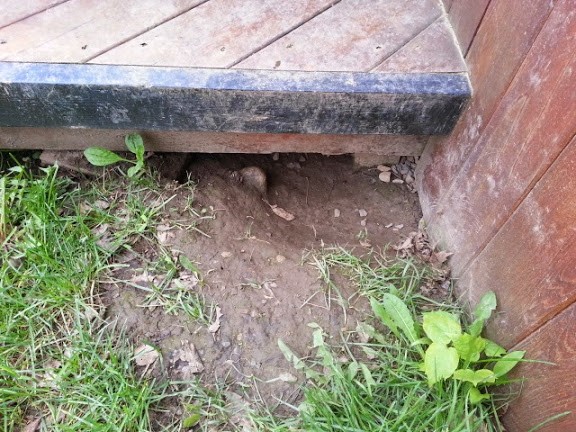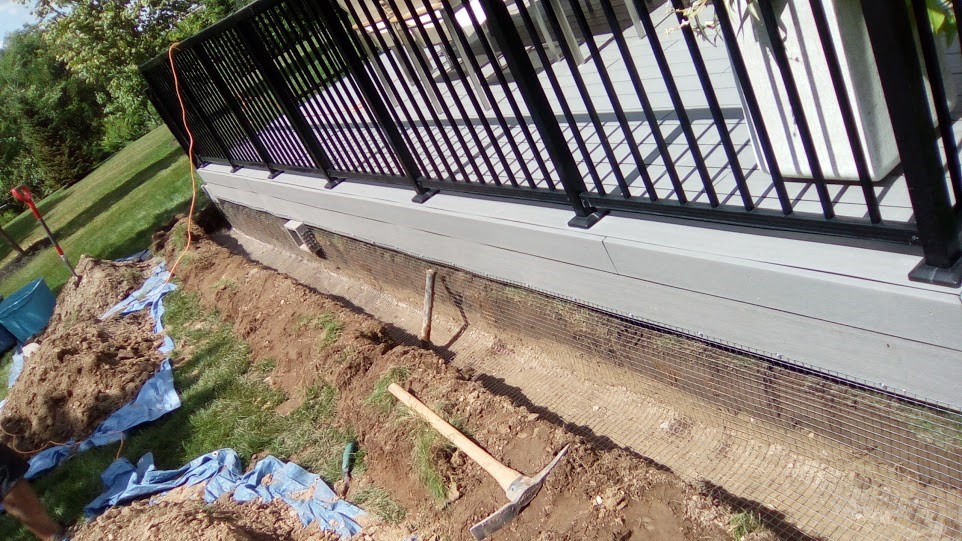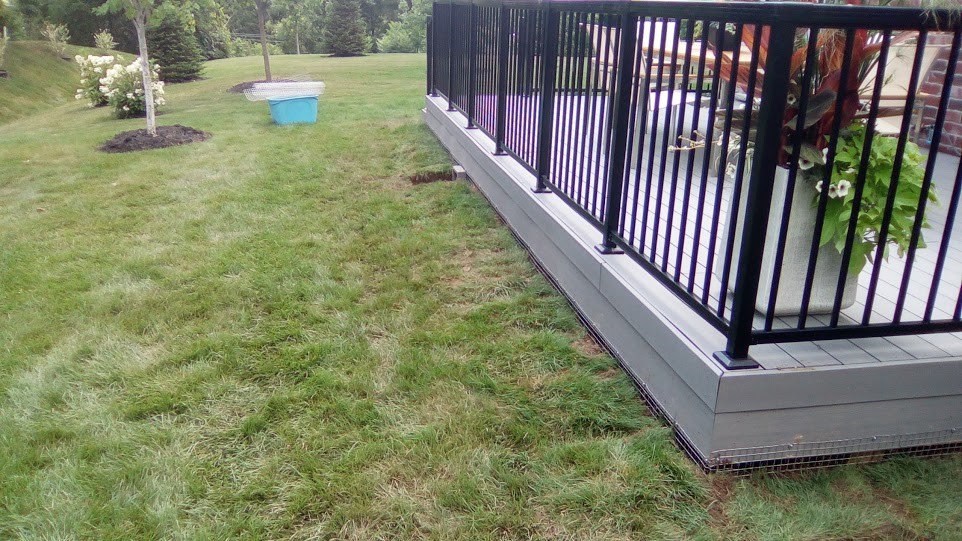For the most part humans and raccoons live in harmony. Raccoons generally have five or six den sites in a residential area. They have adapted to living in more urban and suburban settings. At any given time you can bet there are raccoons living near your house.
Decks are common summer dens sites for raccoons
It’s a safe, dark and quiet place a mother and her babies. Raccoons are often attracted to your property because of easy access to food. They’re scavengers so they will eat pretty much anything. Underground dens are generally only used for short periods of times. By the end of summer the babies are independent and disperse from the family. Mothers will move babies between dens during nesting season. However, raccoons may become aggressive if they feel threatened.

Plenty of muddy paw prints left behind by raccoons living under this deck
Raccoons may leave by themselves from under your deck
Closer to the end of summer raccoons will seek other places to nest. Somewhere more appropriate for the winter climate. But, waiting for a family of raccoons to leave for winter is not recommended. Raccoons carry disease that can be harmful to humans and their den sites below decks are often taken over by skunks in fall. There’s no point waiting all summer for raccoons to move on only to have another wild animal show up for winter.
It’s suggested to remove any raccoon dens from under your deck and block their entry points. You can humanely harass them to leave.
- Bright light. Raccoons are nocturnal and consistent light may deter them.
- Constant sound. Talk radio replicates the sound of humans that might seem threatening.
- Strong smell. Something unpleasant might get rid of raccoons, but this method is usualt the least successful.
One-way doors and live trapping alone are never good ideas. They can separate raccoon families and can orphan babies. Even if you’re able to get raccoons out from under the deck you still need to prevent them and others from getting back in.

Raccoon proofing a deck involves digging a trench around the perimeter and burying heavy gauge screen in the ground

The finished product: A raccoon proofed deck.
Identify how raccoons get under your deck
You need to block off the points of entry under your deck. Seal any holes or gaps where raccoons can easily commute between food and home. Skedaddle Humane Wildlife Control minimizes raccoon dens on your property with humane wild animal removal.
- We start by removing the babies by hand from under the deck and use them to lure the mother out.
- Babies are then stored in a reuniting box that is designed for their safety.
- Once she exits, the mother relocates the babies to one of her other den sites in the neighbourhood.
- We then dig around the perimeter of the deck and bury heavy gauge screening into the ground to prevent re-entry.
For Hamilton wild animal removal contact Skedaddle Humane Wildlife Control.



